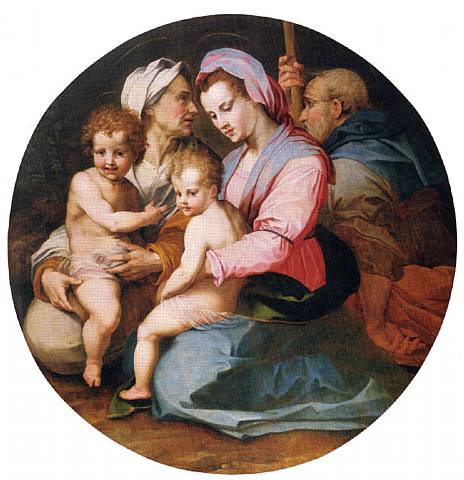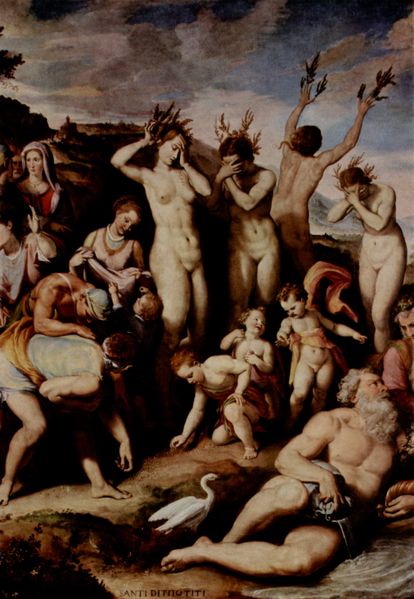Santi di Tito (1536 – 1603)
Get a Santi di Tito (1536 – 1603) Certificate of Authenticity for your painting (COA) for your Santi di Tito (1536 – 1603) drawing.
For all your Santi di Tito (1536 – 1603) artworks you need a Certificate of Authenticity (COA) in order to sell, to insure or to donate for a tax deduction.
Getting a Santi di Tito (1536 – 1603) Certificate of Authenticity (COA) is easy. Just send us photos and dimensions and tell us what you know about the origin or history of your Santi di Tito (1536 – 1603) painting or drawing.
If you want to sell your Santi di Tito (1536 – 1603) painting or drawing use our selling services. We offer Santi di Tito (1536 – 1603) selling help, selling advice, private treaty sales and full brokerage.
We have been authenticating Santi di Tito (1536 – 1603) and issuing certificates of authenticity since 2002. We are recognized Santi di Tito (1536 – 1603) experts and Santi di Tito (1536 – 1603) certified appraisers. We issue COAs and appraisals for all Santi di Tito (1536 – 1603) artworks.
Our Santi di Tito (1536 – 1603) paintings and drawings authentications are accepted and respected worldwide.
Each COA is backed by in-depth research and analysis authentication reports.
The Santi di Tito (1536 – 1603) certificates of authenticity we issue are based on solid, reliable and fully referenced art investigations, authentication research, analytical work and forensic studies.
We are available to examine your Santi di Tito (1536 – 1603) painting or drawing anywhere in the world.
You will generally receive your certificates of authenticity and authentication report within two weeks. Some complicated cases with difficult to research Santi di Tito (1536 – 1603) paintings or drawings take longer.
Our clients include Santi di Tito (1536 – 1603) collectors, investors, tax authorities, insurance adjusters, appraisers, valuers, auctioneers, Federal agencies and many law firms.
We Perform Santi di Tito art authentication. Santi di Tito appraisal. Santi di Tito certificates of authenticity (COA). Santi di Tito analysis, research, scientific tests, full art authentications. We will help you sell your Santi di Tito or we will sell it for you.

Santi di Tito was an Italian painter of Late-Mannerist or proto-Baroque style, what is sometimes referred to as Contra-Maniera. Born in Borgo San Sepolcro, in Tuscany. There is little documentation to support the alleged training under Bronzino or Baccio Bandinelli. From 1558-1564, he worked in Rome on frescoes in Palazzo Salviati and the Sala Grande of the Belvedere (Homage of the People) alongside Giovanni de’ Vecchi and Niccolò Circignani. He acquired a classical trait, described as Raphaelesque by S.J. Freedburg. This style contrasted with the reigning ornate Roman painterliness of the Federico and Taddeo Zuccari or their Florentine equivalents: Vasari, Alessandro Allori, and Bronzino. Among his pupils was Cigoli.

After returning to Florence in 1564, He joined the Accademia del Disegno, and he did not venture to paint outside of Tuscany. He contributed two unusual paintings for the quirky hobby-room of the duke, the Studiolo. The artistic project was partly overseen by Giorgio Vasari. These paintings are (the Sisters of Phaeton and Hercules and Iole). These works, like many of those in the studio appear to have been a uninspired submission of crowded and overworked scenes.

He contributed a Sacra Conversazione for the Ognissanti and painted two altarpieces for Santa Croce in Florence: a crowded, but monumental Resurrection (1570-74) and a proto-Caravaggesque Supper at Emmaus (1574). His masterpiece, and reflective of his mature style, is of the Vision of Saint Thomas Aquinas, also known as Saint Thomas Dedicating His Works to Christ. It expresses a simple pious gesture that appeared to have been lost from the theoretically-minded Florentine painters since the days of Masaccio, while maintaining the brittle, demarcated color that is classic of Tuscan works. The off-balance of the figures emphasizes a diagonal rise towards the crucified Christ. It is a prescient style that will be more evident in following decades with the ascendant Bolognese School of painting, epitomized by the Agostino and Ludovico Carracci.

Partial anthology of works
• Resurrection of Lazarus (1576) – Santa Maria Novella, Florence
• Sacred Conversation
• Annunciation (1576) – Santa Maria Novella, Florence
• Sisters of Phaeton (1572) – Studiolo of Francesco I, Palazzo Vecchio, Florence
• Hercules and Iole (1572) – Studiolo of Francesco I, Palazzo Vecchio, Florence
• Pietà with Saints and Military Officer – Galleria degli Uffizi, Florence
• Holy Family with St. Elizabeth and John the baptist
• Doubting Thomas (1583) – Duomo, Borgo San Sepolcro
• Crucifixion (1588, Santa Croce)
• Marriage at Cana (1593) – Villa Chierichetti, Colazzo
• Vision of Saint Thomas Acquinas (1593) – San Marco, Florence
• Supper at Emmaus (1588) – Santa Croce
• Annunciation (1602) – Santa Maria Novella
• Four ages of Woman and the Written Law – Musee Fesch, Ajaccio
Reviews
1,217 global ratings
5 Star
4 Star
3 Star
2 Star
1 Star
Your evaluation is very important to us. Thank you.
